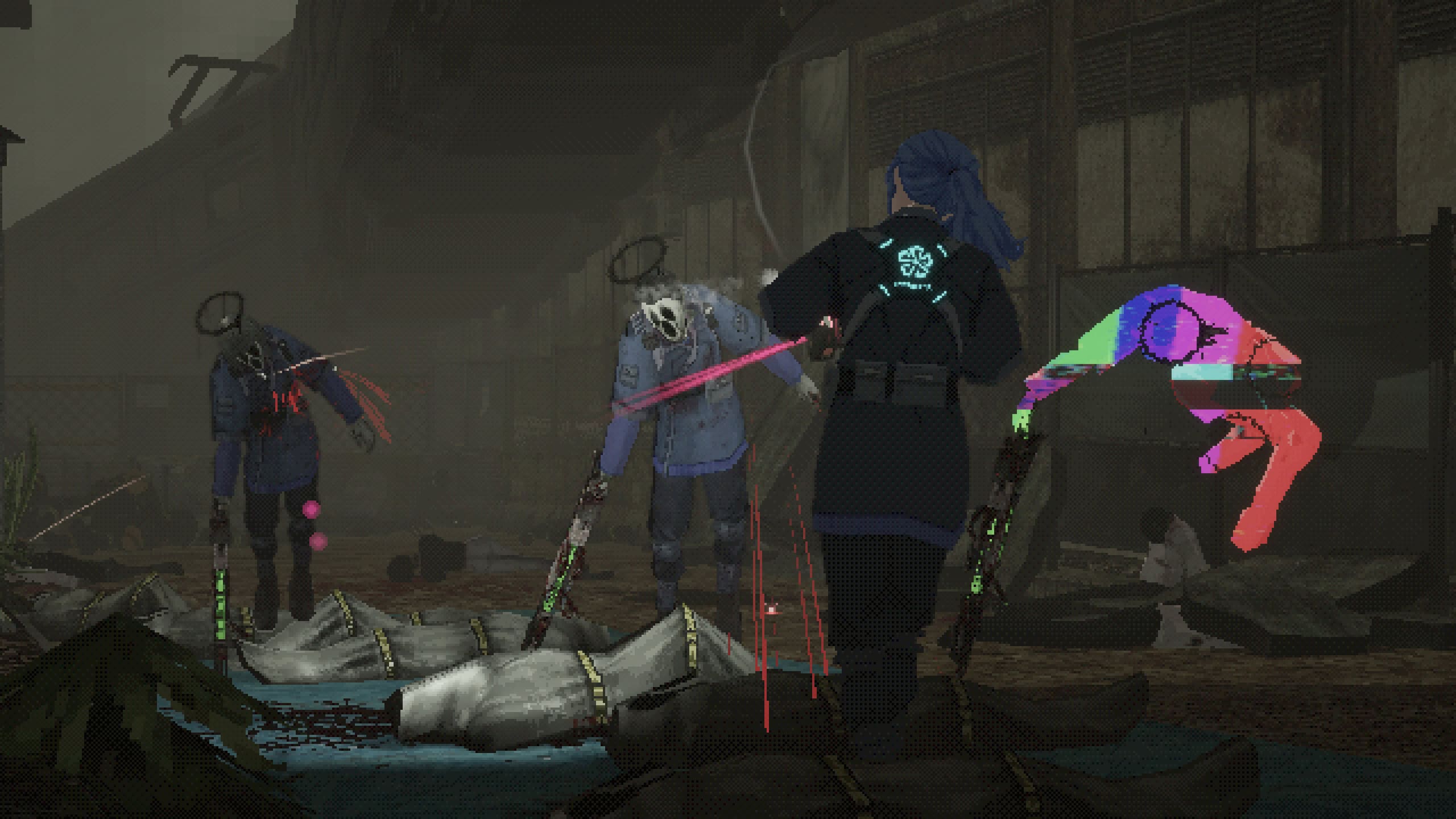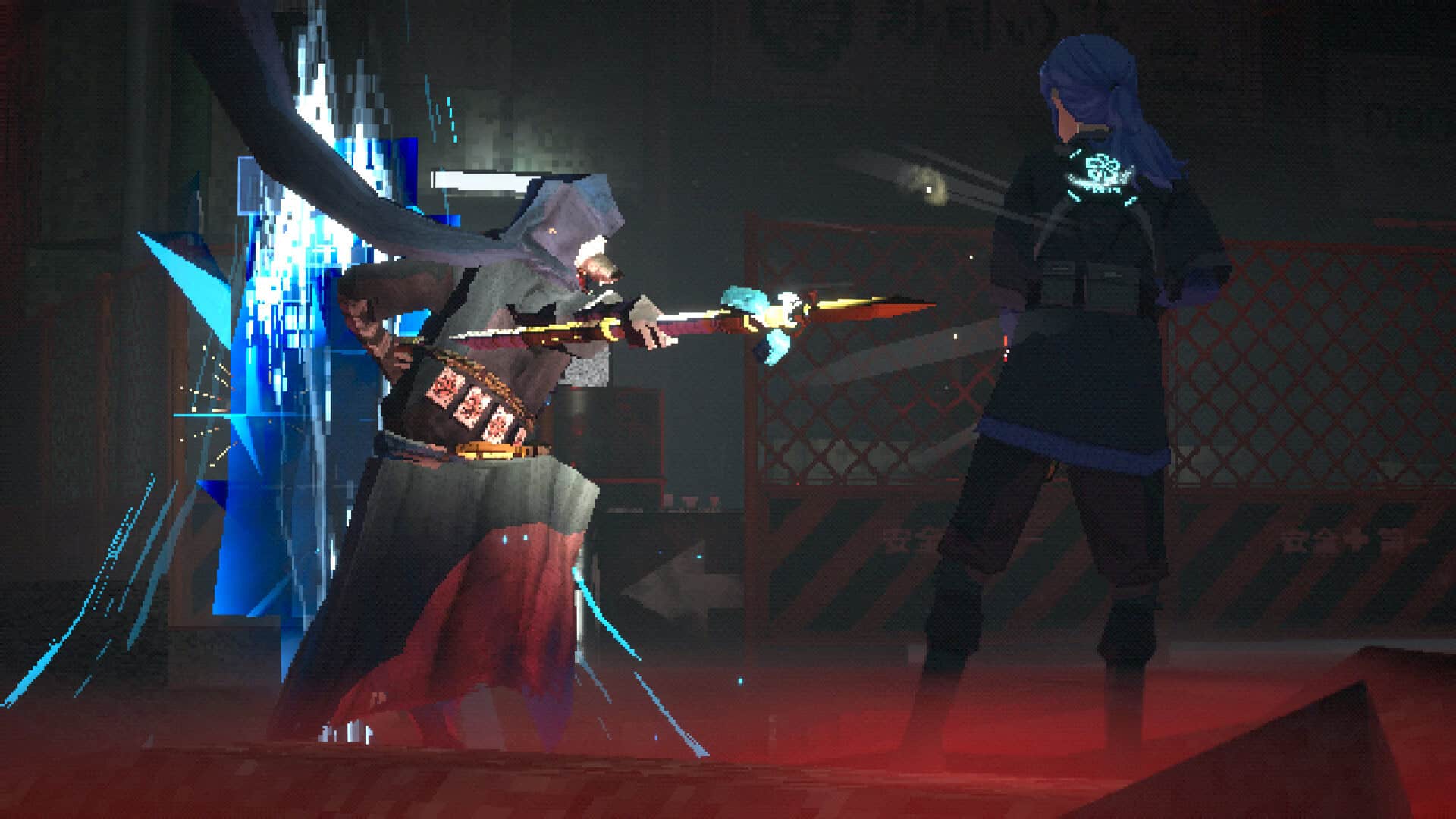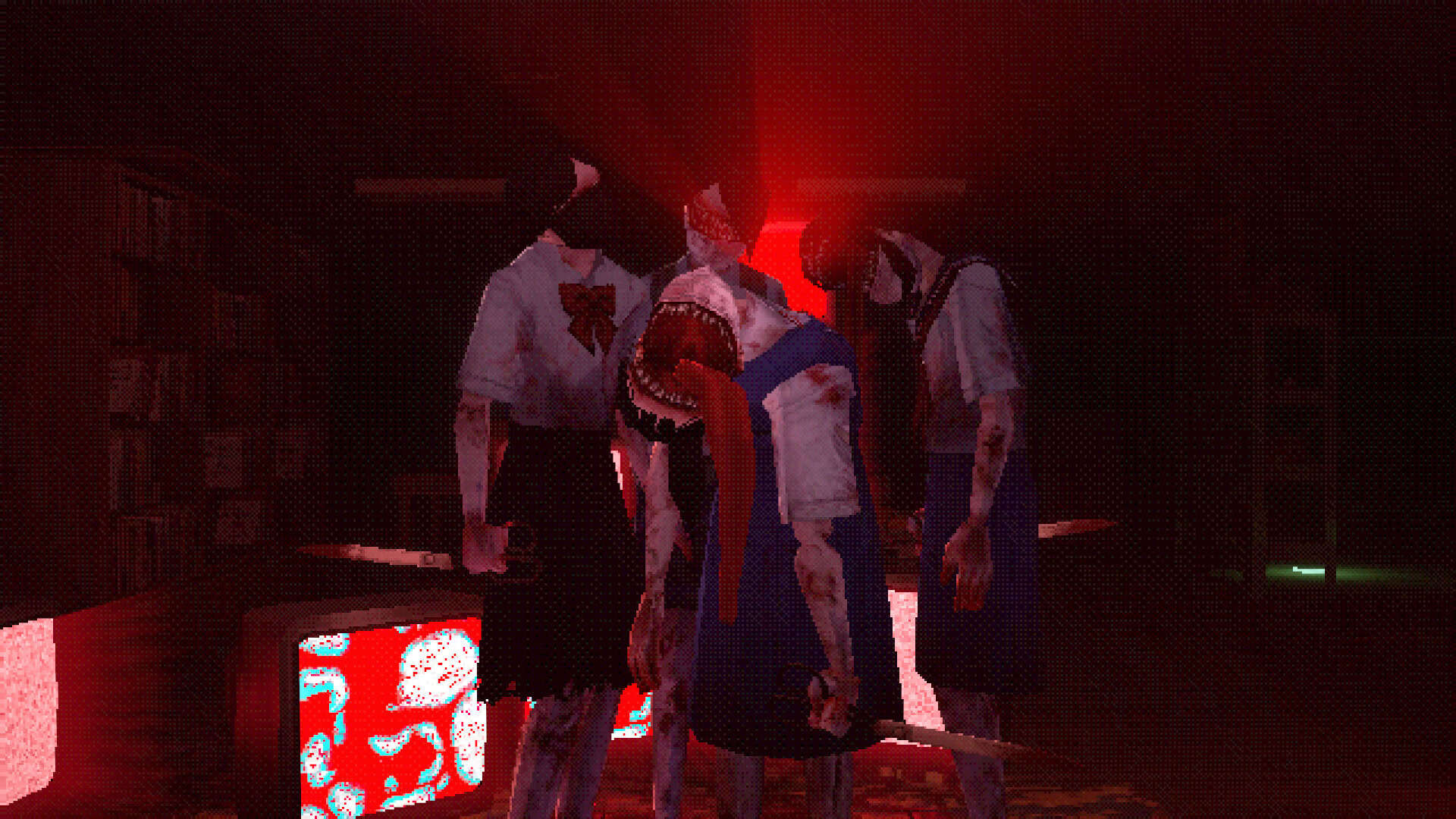Tokyo is under siege by shadows in NIGHTMARE OPERATOR, a game that takes players deep into the haunted ruins of the city in the year 2036. Blending classic survival horror with fast-paced action, the game lets players hunt terrifying Youkai that roam the streets. Fans of retro horror shooters and fighting game mechanics will find a fresh and thrilling challenge in this unique setting.
Every encounter in NIGHTMARE OPERATOR is tense and skill-based, as players switch weapons using commands inspired by fighting games and face off against strange supernatural enemies. The dark story and atmospheric design combine to create an intense experience set in Tokyo’s mysterious future. These elements make NIGHTMARE OPERATOR stand out for anyone eager to try something different in the horror-action genre.
A Haunting Vision of Future Tokyo
Set in the year 2036, NIGHTMARE OPERATOR throws players into a fractured, post-apocalyptic version of Tokyo, now overrun with supernatural entities known as Youkai. Developed by Tokyo-based indie studio DDDistortion, the game merges action-horror gameplay with deep-rooted Japanese folklore, all wrapped in a unique low-poly art style that pays homage to early 3D-era titles.
Players step into the boots of Misha, a Public Safety Operator assigned to patrol the Quarantine City of Shin-Chiba. Her job: eliminate the spectral threats and maintain order in a city clinging to survival. But beneath the surface of her assignments lies a darker truth about the city’s collapse, the rise of the Youkai, and Misha’s own past.
Fighting Game Flair Meets Survival Horror
What truly sets NIGHTMARE OPERATOR apart is its “Clutch System” — a combo-based combat mechanic inspired by fighting games. Misha wields a customizable Modular Gun that allows players to swap between elemental weapon modules mid-combat. Switching between fire, ice, electricity, and bleed effects can create devastating combo chains that not only rack up damage but apply strategic status effects to slow or disable enemies.

This system invites experimentation. For example:
| Element | Status Effect | Strategy |
|---|---|---|
| Fire | Burn (DOT) | Great for crowd control and DoT stacking |
| Ice | Freeze (Slow) | Ideal for controlling fast-moving Youkai |
| Electric | Stun (Interrupt) | Best used on charging or teleporting enemies |
| Bleed | HP Drain | Effective for draining tougher enemies over time |
Mastering the Clutch System turns each encounter into a fluid, tactical dance of offense and evasion.
Lo-Fi Visuals, Hi-Fi Atmosphere
Graphically, NIGHTMARE OPERATOR takes a deliberately retro approach. The game uses a lo-fi aesthetic reminiscent of late-90s PlayStation titles, complete with pixelated textures, angular models, and ambient lighting that oozes atmosphere. But this isn’t just a visual gimmick — it enhances the uncanny horror vibe, creating a dreamlike version of Tokyo that feels both nostalgic and nightmarish.
Each environment is based on real Tokyo districts, warped into decaying remnants of their former selves. Whether you’re creeping through abandoned arcades or navigating fog-drenched alleyways, the game constantly pushes a sense of dread and discovery.

Slice-of-Life in a Horror Game?
In a surprising twist, NIGHTMARE OPERATOR balances its horror with moments of grounded, human connection. Between missions, players can visit a local izakaya for “Kanpai” sessions — essentially post-shift drinking parties. These interactions let you build relationships, uncover world lore, and learn more about the cast’s backstories.
This social system isn’t just filler — it reveals emotional layers beneath the chaos, grounding the horror in personal stakes. It’s also where the game shows off its quirky humor and writing chops, giving you a breather before diving back into the action.
Influences and Industry Talent
The game’s protagonist, Misha, received a redesign from Gravity Rush art director Takeshi Oga, lending the game a distinct, stylized visual identity. The development team has cited influences ranging from Parasite Eve and Ghost in the Shell to Japanese urban legends and 90s survival horror.
At Tokyo Game Show 2024, fans got a look at new enemy designs, with grotesque creatures that draw from traditional folklore like the Yurei and Tengu, blending them into cyberpunk body horror monstrosities.
When Can You Play It?
NIGHTMARE OPERATOR currently does not have a confirmed release date, but it is planned for PC and will be available on Steam. The game has been steadily gaining traction since its Indie Live Expo 2024 reveal, with hype continuing to build thanks to strong trailers and developer transparency.
You can wishlist the game now on Steam and follow its updates as it nears completion. For fans of stylish action, creepy atmospheres, and combat that rewards mastery, NIGHTMARE OPERATOR is shaping up to be one of the most interesting indie horror games in years.
Key Takeaways
- NIGHTMARE OPERATOR takes place in a haunted future Tokyo.
- The game mixes survival horror with fighting-style combat.
- Unique mechanics and atmosphere set it apart from other shooters.
Game Overview and Setting
NIGHTMARE OPERATOR is an action-horror shooter set in the haunted ruins of Tokyo in the year 2036. The game features a mix of dystopian storytelling, retro shooter mechanics, and a unique style inspired by old-school games and Japanese folklore.
Dystopian 2036 Tokyo
The story unfolds in a future Tokyo, specifically the Quarantine City of Shin-Chiba. Society has collapsed after a major crisis, and only fragments of the population remain. This new Tokyo is a dark and dangerous city haunted by youkai—supernatural creatures from Japanese mythology.
Players take on the role of Misha, a Public Safety Operator working for the Provisional Government. Her job is to eliminate these youkai threats and protect what’s left of the city. As she explores ruined skyscrapers and deserted streets, she uncovers secrets that could threaten what little is left of civilization.
Shin-Chiba feels isolated from the rest of the world. There is little information about regions outside Japan, such as Europe, but hints of global collapse appear in environmental storytelling. Daily life in this setting is bleak, with citizens surviving on rationed supplies while avoiding supernatural dangers.
Retro Horror Shooter Genre
NIGHTMARE OPERATOR belongs to the retro horror shooter genre. The game uses third-person action mechanics and takes inspiration from classic survival horror titles. Combat is tense and relies on thoughtful movement, precise shooting, and managing limited resources.
A key feature is the weapon system, where players switch weapons using fighting game-style commands rather than standard keys or buttons. This system introduces a learning curve but adds depth to every fight. Mixing character-action elements with survival horror keeps the gameplay fresh and challenging.
Fans of classic character shooters will recognize nods to past games, but NIGHTMARE OPERATOR stands out with its unique blend of supernatural threats and intense encounters. Players have to adapt to limited ammunition and unpredictable enemy patterns in each new area.
Unique Visual and Audio Style
The game’s visuals are heavily influenced by late 1990s and early 2000s shooters, blending low-poly models and moody lighting. Abandoned urban locations, neon signs, and grainy textures create a sense of nostalgia. The style captures both the eeriness of a decaying Tokyo and the energy of its lost nightlife.
Monsters are inspired by traditional Japanese youkai yet designed with a retro twist—jagged, surreal, and unsettling. Cutscenes and menus use stylized, pixel-like art to reinforce the game’s vintage feel.
Audio design focuses on building tension with ambient urban noises and sudden musical cues. Music shifts from quiet electronics to intense pulse-pounding tracks during fights. Voice acting and radio chatter further immerse players in Misha’s lonely struggle to survive the nightmarish cityscape.
For more on this game’s setting and features, visit the official NIGHTMARE OPERATOR Steam page.
Storyline and Key Themes
NIGHTMARE OPERATOR is set in a devastated Tokyo in the year 2036. The game follows Misha, an exorcist working for the Provisional Government, as she hunts supernatural enemies and uncovers secrets that threaten humanity’s survival.
Murder and Persecution Motifs
The storyline centers on violence and loss. Misha’s mission involves tracking down and fighting youkai—dangerous creatures from Japanese folklore—within a quarantined Tokyo. Her encounters are often brutal, with murder and bloodshed marking her path as she works to save what’s left of her city.
Persecution is a recurring theme. Many characters face threats from both monsters and a distrustful human society. The remnants of the population are suspicious of outsiders and those with unusual abilities, creating a tense, fearful environment. Misha herself faces suspicion because of her exorcist skills. This constant threat of violence and exclusion heightens the feeling of danger throughout the narrative.
Key examples of persecution include:
- Isolation of survivors in ruined city zones
- Attacks from both youkai and humans
- Misha’s struggle for acceptance among fearful citizens
Psychological Horror and Personality
The game explores fear on a psychological level. Misha’s journey is not just physical but mental. Facing monstrous enemies and disturbing sights, she often questions her own actions and sense of right and wrong. Her personality is shaped by these experiences, making her decisions heavy with internal conflict.
Players get to see Misha’s personality evolve. Her memories, guilt, and sense of responsibility come to the surface as the story moves forward. The game uses flashbacks, inner dialogue, and subtle environmental details to show how trauma affects her psyche.
Character development tools:
- Flashbacks to past traumas
- Choices that impact dialogue and relationships
- Visuals and sound design that mirror her state of mind
This focus on psychological horror mixes with the game’s dark narrative to deliver an experience grounded in personal struggle and survival fears. For more details on Misha and the story, visit the Nightmare Operator story overview.
Gameplay Mechanics and Features
NIGHTMARE OPERATOR blends classic survival horror with intense shooter action and fighting game complexity. The game uses detailed systems and layered mechanics to create a unique experience in a futuristic Tokyo.
Trial and Initiation Elements
Players take on the role of a Youkai-hunter starting out in a harsh, post-apocalyptic Tokyo. Early stages act as a “trial by fire.” They introduce basic controls and survival tasks in a structured way.
Challenges often mimic a real initiation, requiring quick learning of movement, resource management, and enemy encounters. The game expects players to adapt quickly, rewarding those who pay attention to environmental clues.
Choices made during early missions impact how the story and difficulty progress. Each step feels meaningful, pushing the player to master the basics before advancing deeper into the city’s supernatural dangers.
Combat System and Weapons
Combat in NIGHTMARE OPERATOR combines tense, classic survival horror shooting with skill-based fighting game mechanics. Precision aiming is required, and weapon usage feels impactful.
Key features include:
- Modular gun system: Players can adjust weapons with different parts, changing how they function.
- Tactical reloads: Timing is critical. Reloading carelessly leaves players exposed.
- Stamina management: Attacking, dodging, and running drain stamina, forcing players to think ahead.
- Varied enemy types: Some monsters require special ammunition or a specific attack pattern.
The combat system encourages both strategy and quick reflexes. Mastering timing, weapon customization, and stamina use is essential for survival.
Level Design and Progression
Set in a decaying 2036 Tokyo, the levels present winding streets, broken skyscrapers, and hidden shrines inspired by Japanese folklore. Exploration is encouraged, with secrets and rare items tucked away in side areas.
Progression is not strictly linear. Multiple paths, locked gates, and environmental puzzles require players to backtrack and revisit earlier locations. This Metroidvania-like design allows for a sense of discovery and reward.
Enemy placements and hazards change as players progress, with new threats appearing in old areas. Players must use everything they’ve learned to advance, adapting their tactics to each new section while searching for paths forward and unlocking new weapon upgrades. For an in-depth look at the Tokyo setting and gameplay details, visit this breakdown on Nightmare Operator.
Cultural and Global Influences
NIGHTMARE OPERATOR draws inspiration from both Japanese and Western media. Its world, set in ruined Tokyo, blends global pop culture with unique characters and themes.
Hollywood and Western Impact
The game’s atmosphere and action take strong cues from classic Hollywood films and Western video games. NIGHTMARE OPERATOR uses cinematic camera angles and tense pacing found in American action and horror movies. Players notice quick cuts and dramatic lighting, similar to scenes from films like Blade Runner and Escape from New York.
Western video game design is also reflected in its mechanics. Combat and movement are influenced by skill-based games from the US and Europe. The blend of Japanese survival horror with Western fighting elements creates a familiar but fresh feel.
Table: Hollywood Influences in NIGHTMARE OPERATOR
| Element | Hollywood Influence |
|---|---|
| Cinematic style | Blade Runner, Escape from NY |
| Action mechanics | Western fighting games |
| Pacing | Tense, movie-like sequences |
Characters Like Bart
Bart stands out as one of the most memorable characters in NIGHTMARE OPERATOR. He combines familiar Western archetypes with original twists. His style and mannerisms reflect action movie heroes from Hollywood, yet he fits naturally into the game’s Tokyo setting.
Bart’s clothing, speech, and role in the story show clear Western inspiration. He often brings humor and boldness, contrasting with more reserved Japanese characters. Players may notice nods to classic American pop culture in his dialogue and design.
His character helps bridge the gap between local and global influences, giving NIGHTMARE OPERATOR wide appeal across cultures.
Frequently Asked Questions
Players often want to know about the technical details, secrets, and storylines in NIGHTMARE OPERATOR. Many details have been posted officially, but some information is still limited as the game continues to get updates.
What are the system requirements for ‘NIGHTMARE OPERATOR’ on PC?
The PC version of NIGHTMARE OPERATOR recommends a mid-range CPU and a dedicated graphics card. At least 8 GB of RAM is needed for smooth gameplay. Windows 10 or higher is required. For more detailed requirements, check the official Steam page.
Is ‘NIGHTMARE OPERATOR’ available for consoles, and if so, which ones?
Currently, NIGHTMARE OPERATOR is announced for Windows PC. There has been no formal news on console releases for PlayStation, Xbox, or Switch at this time. Future console releases are not confirmed by the developer.
What is the release date for the ‘Labyrinth of the Demon King’ expansion for ‘NIGHTMARE OPERATOR’?
As of now, there is no official release date for the ‘Labyrinth of the Demon King’ expansion. The developers have shared project updates but have not set a launch window.
Can you provide a walkthrough for the ‘Samurai Unicorn’ level in ‘NIGHTMARE OPERATOR’?
A full walkthrough for the ‘Samurai Unicorn’ level has not been published yet. Most guides recommend saving resources and using ranged weapons for boss encounters in this stage. Players should watch for hidden paths and note environmental hazards.
How can players acquire the ‘.45 Parabellum Bloodhound’ in ‘NIGHTMARE OPERATOR’?
The ‘.45 Parabellum Bloodhound’ is a rare handgun found in a late-game safe room. To unlock it, players must locate three hidden keys scattered throughout the industrial sector and return with them to a marked weapons locker.
What are the implications of the ‘Holstin’ narrative arc in ‘NIGHTMARE OPERATOR’?
The ‘Holstin’ arc reveals crucial details about the main antagonist’s plans. It connects several story threads about Tokyo’s fate in 2036 and the protagonist’s personal history. Understanding this arc helps make sense of the final act and the game’s darker themes.







